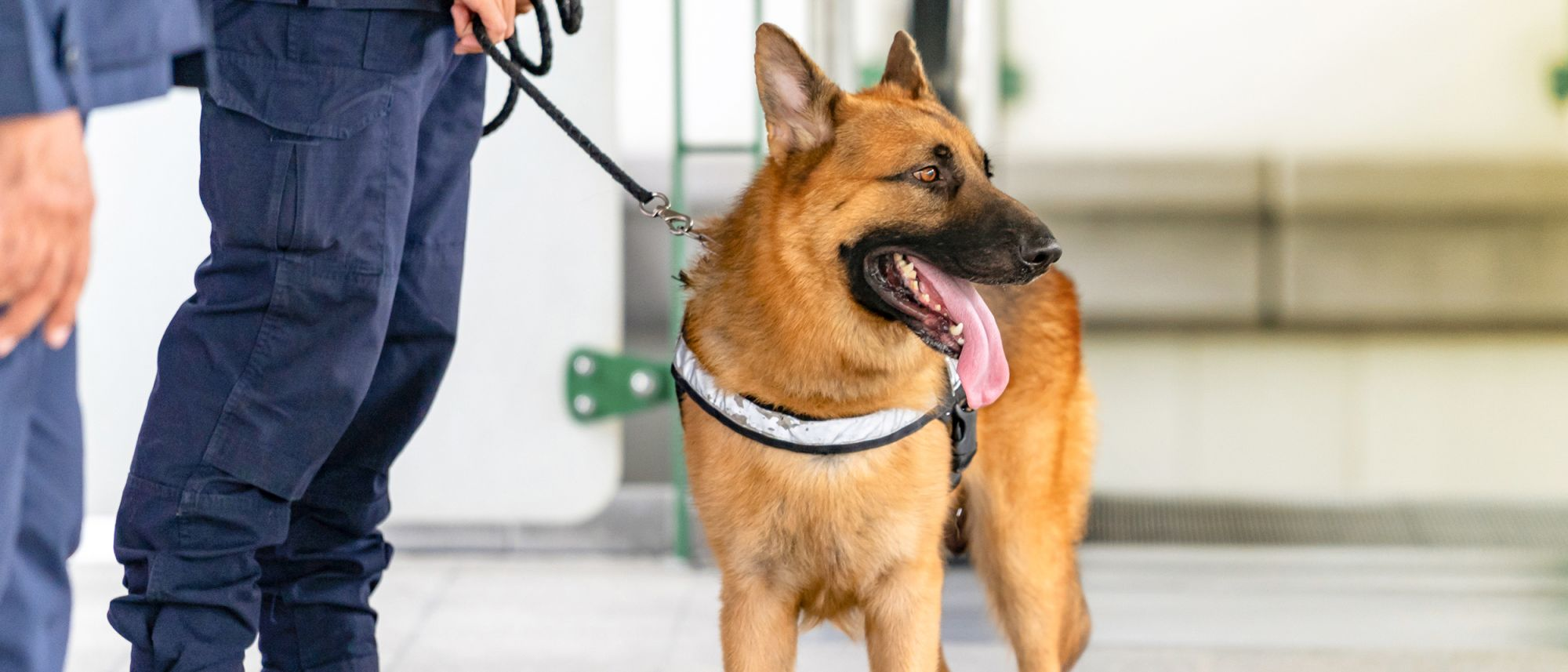Can dogs detect COVID-19?
Article

Testing for COVID-19 is now more important than ever to avoid another wave, sweeping local regions and whole countries in and out of lockdown. However, it has been widely acknowledged that mass testing regimes will play a key role in minimising the impact of the disease. As testing is proving challenging in some environments and even in some countries, are there other reliable methods which could prevent COVID-19 from spreading? Some dog behavioural experts believe the key could be in the form of our canine friends.
Canine olfactive (sense of smell) detection has proven its efficacy in numerous situations (explosives, drugs, bank notes…) including for early diagnosis of human diseases: various cancers, alert of diabetic or epileptic people in immediate alarm of crisis.
If proven effective and accurate, sniffer dogs could be invaluable towards the fight against the spread of COVID-19.
What are dogs trained to detect?
Sniffer dogs detecting any scent will often have to pass four stages of training before they can begin working in a live environment.

Stage one

Stage two

Stage three

Stage four
Around the world, there are a number of different researchers looking into the possibility of training dogs to detect COVID-19. The Nosais Project in France at the Alfort Veterinary School is being led by Professor Dominique Grandjean and Clothilde Lecoq, who are looking into the effectiveness of training dogs commonly used to detect other substances.
The first phase of the program is to train dogs to sniff human sweat samples and see if they can differentiate the sweat odour of COVID-19 [positive] patients compared to that of COVID-19 [negative] persons.
So far, results from their initial research have been promising, concluding there is high evidence that dogs can detect a person infected by COVID-19.

What traits are common in sniffer dogs?
The 18 dogs participating in the study each had an existing skill, such as detecting explosives, banknotes and disaster zones as well as diseases like colon cancer. However, dogs that have previously detected drugs were excluded from the study.
We did not decide to work with drug detection dogs as there is always a possibility that COVID-19 positive or negative people use prohibited substances that would let catabolites be excreted by the axillary sweat.
Belgian Shepherds, German Shepherds and Labradors are commonly used as sniffer dogs. However, Cocker Spaniels and Yorkshire Terriers are beginning to be used more with one reason being they can be transported in the arms of their handler easily if it's necessary to navigate difficult terrain.
Can dogs suffer from coronavirus symptoms?
The current spread of COVID-19 is a result of human-to-human transmission. According to the World Organisation for Animal Health (OIE) to date, there is no evidence to suggest that companion animals are playing a role in the spread of COVID-19.Find our latest guidance on the coronavirus pandemic and how this could affect your pet here.
How will these dogs be used within society?
In many countries worldwide, diagnostic tests are lacking in order to set up a mass detection of COVID-19 contaminant people, we think it is important to explore the possibility of introducing dog olfactive detection as a rapid, reliable and cheap “tool” to either pre-test willing people or be a fast checking option in certain circumstances.
If dogs are able to detect COVID-19 accurately, they will be helpful in airports when identifying whether it is safe for a visitor to enter a country. Emirates Airline and Lebanon have been deploying dogs in airports for several weeks now, with Finland and France (in the Corsica region) also starting to carry out such tests.
As trials continue, the initial research appears to be producing positive results. The hope is that these dogs can begin wider testing on the general public to protect everyone and perform a key role in reducing the spread of the virus.
*Pirrone, F. and Albertini, M., 2017. Olfactory detection of cancer by trained sniffer dogs: A systematic review of the literature. Journal of Veterinary Behavior, 19, pp.105-117.
**Grandjean et al., 2020. Detection dogs as a help in the detection of COVID-19 Can the dog alert on COVID-19 positive persons by sniffing axillary sweat samples ? Proof-of-concept study.
Like & share this page